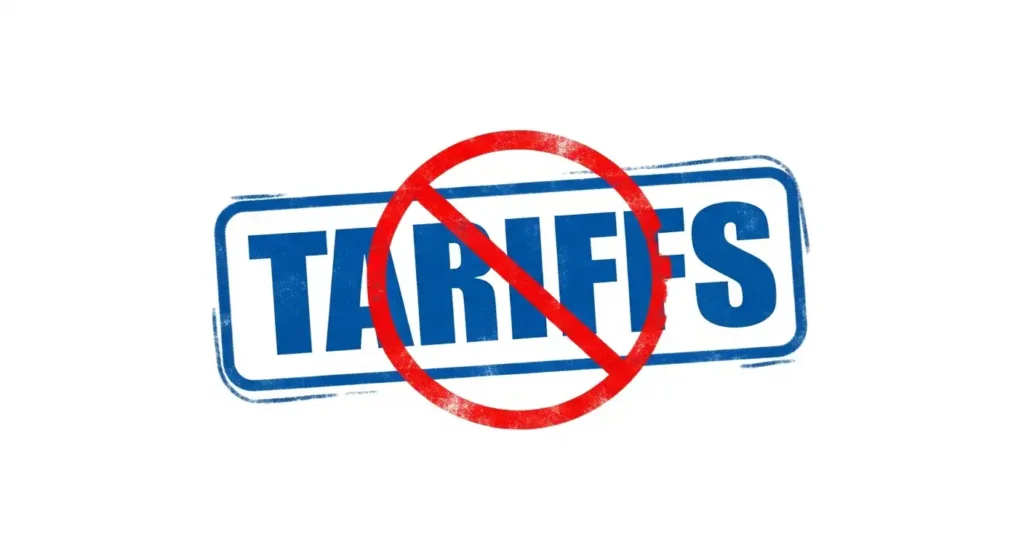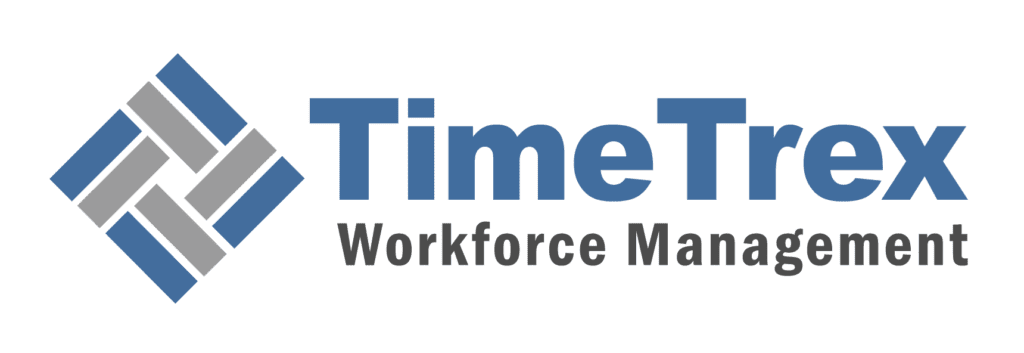
Federal Appeals Court Declares IEEPA Tariffs Unlawful
TL;DR:
A Federal Appeals Court has ruled the Trump administration's global tariffs under the International Emergency Economic Powers Act (IEEPA) as unlawful. This landmark decision challenges the executive branch's power to impose tariffs without clear congressional approval. The ruling has been paused to allow an appeal to the Supreme Court, creating significant uncertainty for businesses involved in international trade. The case hinges on whether the President can use a national emergency declaration to bypass Congress's constitutional authority to tax and levy duties, a question that could reshape the balance of powers in U.S. trade policy.
Article Index
- Correcting the Record and Framing the Constitutional Conflict
- The Tariffs in Contention: An Examination of the IEEPA Actions
- The Judicial Gauntlet: Tracing V.O.S. Selections, Inc. v. Trump
- The Heart of the Matter: A Clash Over the Separation of Powers
- Judicial Ghosts: The Nondelegation Doctrine and Its Historical Precedents
- Economic Crossfire: Analyzing the Impact of the IEEPA Tariffs
- Global Ripples: International Reactions and Foreign Policy Stakes
- The Supreme Court Showdown: The Questions Ahead
- Conclusion and Strategic Recommendations
Correcting the Record and Framing the Constitutional Conflict
In a pivotal ruling on August 29, 2025, the U.S. Court of Appeals for the Federal Circuit declared a majority of the Trump administration's sweeping global tariffs unlawful. It is crucial to note that this decision was not from the Supreme Court, which has yet to issue a ruling on the merits of this case. The Federal Circuit's 7-4 en banc decision in V.O.S. Selections, Inc. v. Trump represents a significant judicial check on the executive branch's expansive interpretation of its emergency economic powers and is a landmark challenge to presidential trade authority.
The central legal issue is whether the International Emergency Economic Powers Act (IEEPA) of 1977, which allows the President to "regulate...importation" during a national emergency, also grants the power to unilaterally impose sweeping tariffs. This question carries profound constitutional implications, as the U.S. Constitution primarily grants Congress the power to tax and levy duties.
The Federal Circuit has stayed its ruling until October 14, 2025, to allow the Trump administration to appeal to the Supreme Court. This sets the stage for a constitutional showdown over the separation of powers in international trade and economic policy.
The Tariffs in Contention: An Examination of the IEEPA Actions
The legal controversy revolves around the Trump administration's novel use of the IEEPA. Historically used for targeted sanctions, the administration applied it to impose broad, revenue-generating tariffs on a global scale, a significant departure from past executive practice. The tariffs were divided into two main categories, both based on declarations of a "national emergency."
The "Fentanyl" or "Trafficking" Tariffs
On February 1, 2025, Executive Orders 14193, 14194, and 14195 imposed the "Fentanyl" or "Trafficking" tariffs. The justification was a national emergency concerning the threat posed by fentanyl trafficking and challenges related to illegal immigration, with the administration contending that Canada, Mexico, and China were not doing enough to halt these flows.
The "Reciprocal" or "Worldwide" Tariffs
On April 2 and April 9, 2025, Executive Orders 14257 and 14266 established the "Reciprocal" tariffs. This was justified by a national emergency declaration regarding "large and persistent annual U.S. goods trade deficits," which the President framed as a threat to the nation's economy and security.
This policy created a two-tiered system: a baseline 10% duty on imports from nearly every country and additional, country-specific duties on nations with perceived unfair trade practices. By framing these issues as emergencies, the administration sought to bypass Congress and the procedural checks of traditional trade laws, a legal interpretation now rejected by the federal courts.
| Tariff Category | "Fentanyl" / Trafficking Tariffs | "Reciprocal" / Worldwide Tariffs |
|---|---|---|
| Target Countries | Canada, Mexico, China | Worldwide |
| Justification | National emergency related to drug trafficking and illegal immigration | National emergency related to trade deficits and unfair trade practices |
| Tariff Rates | Approx. 35% for Canada, 25% for Mexico, 20% for China (with some exceptions) | Baseline 10% plus additional country-specific duties ranging from 11% to 50% |
The Judicial Gauntlet: Tracing V.O.S. Selections, Inc. v. Trump
The legal challenge began in the U.S. Court of International Trade (CIT), where a coalition of small businesses, led by wine importer V.O.S. Selections, and twelve states, led by Oregon, filed lawsuits. They argued the tariffs exceeded the President's statutory authority under IEEPA, usurping a core power of Congress.
The CIT's Landmark Ruling (May 28, 2025)
On May 28, 2025, a three-judge panel of the CIT ruled in favor of the plaintiffs, stating that IEEPA's authority to "regulate... importation" does not grant unlimited power to impose tariffs. The court issued a permanent injunction, ordering the government to cease enforcing the tariffs.
The Government's Appeal and the Stay
The administration appealed to the U.S. Court of Appeals for the Federal Circuit and was granted a stay, keeping the tariffs in effect. The court then fast-tracked the case for an en banc hearing, signaling its view of the case as a fundamental challenge to executive power destined for Supreme Court review.
The Federal Circuit's En Banc Decision (August 29, 2025)
The full Federal Circuit affirmed the CIT's conclusion that the President exceeded his authority under IEEPA. However, it vacated the nationwide injunction, citing the Supreme Court's recent skepticism about such "universal injunctions" in Trump v. CASA, Inc., and remanded the case back to the CIT.
The Heart of the Matter: A Clash Over the Separation of Powers
The 7-4 split in the Federal Circuit reflects a larger debate over executive power versus congressional authority.
The Majority Opinion: Upholding Congressional Authority
The majority opinion, grounded in textualism, argued that the power to "regulate" is distinct from the power to "tax." It emphasized that Congress delegates its taxing power with explicit language, which is absent from IEEPA. The ruling reaffirms that levying taxes and duties is "a core Congressional power" under Article I of the Constitution.
The Dissenting Opinion: Championing Executive Prerogative
The dissent argued for a broader interpretation of "regulate" to include tariffs, especially in emergencies and foreign affairs. It cited historical precedent and asserted that the President is granted greater leeway in foreign policy and national security. This ideological split now provides the Supreme Court with two competing legal philosophies to consider.
Judicial Ghosts: The Nondelegation Doctrine and Its Historical Precedents
The case implicates the nondelegation doctrine, which holds that Congress cannot delegate its essential lawmaking functions. Historical cases like Marshall Field & Co. v. Clark (1892) and J.W. Hampton, Jr., & Co. v. United States (1928) established the "intelligible principle" test, allowing delegation if Congress provides a clear principle to guide executive action.
The IEEPA tariffs represent one of the most sweeping delegations of economic power in modern U.S. history. This presents a perfect test case for a Supreme Court that has signaled interest in reviving a more muscular nondelegation doctrine, potentially altering the balance of power between Congress and the executive branch.
Economic Crossfire: Analyzing the Impact of the IEEPA Tariffs
The economic effects of the IEEPA tariffs are intensely debated.
The Congressional Budget Office (CBO) Paradox
The CBO projects the tariffs would reduce the federal budget deficit by $2.8 trillion to $4.0 trillion over the next decade but would also reduce U.S. real GDP by 0.6% by 2035, lower investment, and increase consumer price inflation.
Think Tank Analyses: A Bleaker Picture for Households and Growth
Independent analyses from think tanks like the Yale Budget Lab, Tax Foundation, and the Peterson Institute for International Economics emphasize negative consequences, including significant household income loss, job losses, and harm to sectors like agriculture and manufacturing.
This divergence creates a policy paradox, allowing political actors to selectively use data to support opposing narratives about the tariffs' success or failure.
| Institution | Projected Impact on Federal Deficit | Projected Impact on GDP | Projected Impact on Households |
|---|---|---|---|
| CBO | $2.8T - $4.0T reduction over 10 years | -0.6% by 2035 | Increased consumer price inflation |
| Yale Budget Lab | Not specified | Reduction in real GDP growth, over 700,000 jobs lost | $2,400 - $4,700 average income loss |
| Tax Foundation | Not specified | -0.9% in the long run | Over $1,500 average tax increase in 2026 |
Global Ripples: International Reactions and Foreign Policy Stakes
The Federal Circuit's ruling introduces uncertainty into U.S. foreign relations, weakening the administration's diplomatic leverage.
- Canada and Mexico: Both nations have condemned the tariffs, with Mexico vowing potential retaliation.
- European Union: The EU has voiced "strong disapproval" and threatened "proportionate countermeasures."
- China: The tariffs have escalated the ongoing trade conflict, leading to a tit-for-tat retaliatory spiral.
The legal challenge has "judicialized" a core component of the administration's foreign policy, transferring power from the White House to the Supreme Court and creating a period of diplomatic uncertainty.
The Supreme Court Showdown: The Questions Ahead
The Supreme Court is expected to hear the case and will likely confront three key questions:
- The Statutory Question: Does "regulate...importation" in IEEPA authorize the President to impose tariffs?
- The Constitutional Question: If so, does this violate the nondelegation doctrine?
- The Remedial Question: If the tariffs are unlawful, what is the appropriate remedy? A nationwide injunction or relief limited to the plaintiffs?
The remedial question is critical. A ruling that the tariffs are illegal but that a universal injunction is improper could create a chaotic situation where a policy is deemed unlawful, yet most importers are still forced to pay the illegal duties.
Conclusion and Strategic Recommendations
The 2025 IEEPA tariffs are on precarious legal ground, presenting a choice between deficit reduction and broader economic prosperity, while injecting uncertainty into U.S. foreign policy.
Strategic Recommendations for Stakeholders
For Importers and Businesses:
- Contingency Planning: Develop financial models for scenarios where the tariffs are upheld, struck down with universal relief, or struck down with plaintiff-specific relief.
- Documentation and Protest: Meticulously document all tariff payments and consider filing administrative protests to preserve rights to potential refunds. For more information, you can visit the U.S. Customs and Border Protection website.
- Supply Chain Diversification: Continue efforts to diversify sourcing and manufacturing to mitigate risks from trade policy uncertainty.
For Policymakers and Congress:
- Reclaiming Legislative Authority: Congress should consider legislation to clarify and limit the President's authority under IEEPA and other trade statutes to restore its constitutional role.
- Develop Alternative Fiscal Tools: Prepare alternative, legislatively-enacted fiscal policies to address the potential negative impact on the federal budget if the tariffs are struck down.
Calculate the Impact of Tariffs on Your Business
Understanding how these tariffs could affect your bottom line is crucial. Use our free U.S. Tariff Calculator to estimate the potential costs and plan your strategy accordingly.
Use the U.S. Tariff CalculatorDisclaimer: The content provided on this webpage is for informational purposes only and is not intended to be a substitute for professional advice. While we strive to ensure the accuracy and timeliness of the information presented here, the details may change over time or vary in different jurisdictions. Therefore, we do not guarantee the completeness, reliability, or absolute accuracy of this information. The information on this page should not be used as a basis for making legal, financial, or any other key decisions. We strongly advise consulting with a qualified professional or expert in the relevant field for specific advice, guidance, or services. By using this webpage, you acknowledge that the information is offered “as is” and that we are not liable for any errors, omissions, or inaccuracies in the content, nor for any actions taken based on the information provided. We shall not be held liable for any direct, indirect, incidental, consequential, or punitive damages arising out of your access to, use of, or reliance on any content on this page.
About The Author

Roger Wood
With a Baccalaureate of Science and advanced studies in business, Roger has successfully managed businesses across five continents. His extensive global experience and strategic insights contribute significantly to the success of TimeTrex. His expertise and dedication ensure we deliver top-notch solutions to our clients around the world.
Time To Clock-In
Start your 30-day free trial!
Experience the Ultimate Workforce Solution and Revolutionize Your Business Today
- Eliminate Errors
- Simple & Easy To Use
- Real-time Reporting

Saving businesses time and money through better workforce management since 2003.
Copyright © 2025 TimeTrex. All Rights Reserved.
